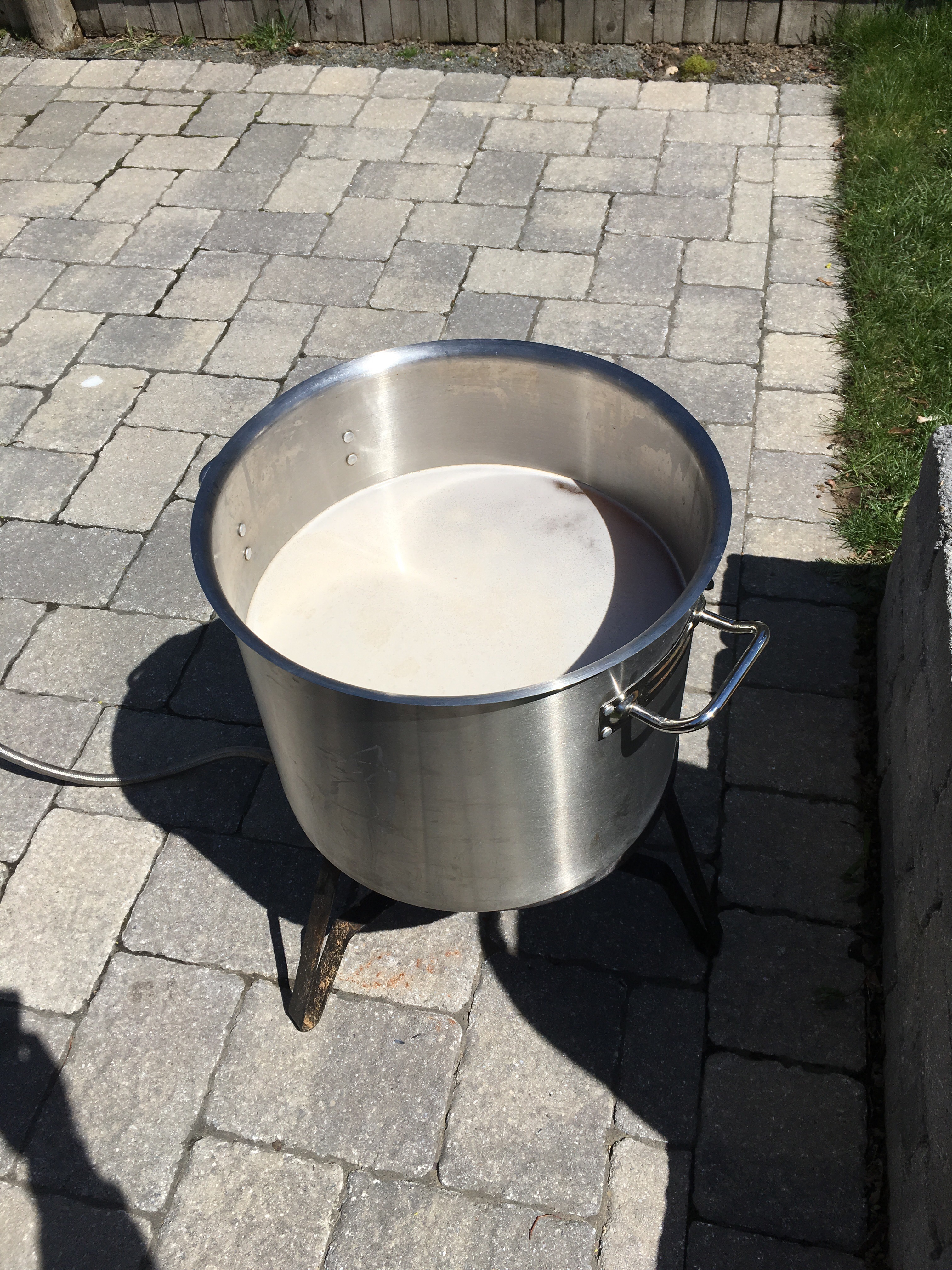Gose (pronounced Goh-zuh) is a very light-colored, lightly sour beer that is lightly hopped and brewed with sea salt and coriander. Light and refreshing, Gose is a perfect summer beer. Not widely available until recently, examples available locally are Rising Tide Gose, Samuel Adams 26.2 which is a draught-only release along the Boston Marathon route, and Anderson Valley who also makes several Gose variants with different fruits. The best Gose I have had is not available in Massachusetts: Westbrook Gose from South Carolina.
 |
| Loading up on beer in Asheville to mule home. |
Westbrook Gose is highly sought after. We picked it up when we visited Asheville, North Carolina. The shop had a one six-pack per-person limit. One friend of mine traded for an entire case. I can only imagine how 24 cans were packaged in one box and shipped.
The other Goses I mentioned are all solid beers that are relatively balanced. Westbrook Gose slapped you in the face with tartness and salt. It's a beer I want in my life. My best bet is to try and clone it. Luckily a thread on Homebrew Talk has the recipe, and a purported photo from the brewery showing the recipe.
The easiest way to add the tartness to the beer is to just add some lactic acid to the wort. From what I have read this gives the beer a one-dimensional and artificial sourness. The sourness in Goze is produced by lactobacillus (lacto), the bacteria used to make yogurt. The safest way that would ensure the most consistent results to sour the beer would be to buy a lacto culture produced by one of the big yeast labs.
From reading the Homebrew Talk thread, Westbrook doesn't use a pure lacto culture. Lactobacillus in the wild loves making itself at home on the husk of grains. Westbrook adds a small amount of grain to the wort after the mash, lets it naturally sour, and then boils the beer. Local brewer Jake Rogers, who is opening True North Ale Company in Ipswich, employed a similar method at Ales for ALS with his Flanders Red. Jake's beer was the peoples' choice. I think this will be a fun method to try!
While researching I stumbled upon this article which suggests lowering the pH of the wort to 4.5 before trying to naturally sour it to try and prevent wild yeast in the air from infecting the beer. I had to wait until I received a new pH meter before I could brew the beer. It showed up in my mailbox exactly like this:
After mashing in, I realized the meter did not come with any batteries. The batteries cost as much as the meter. The instructions to calibrate the devise weren't all that clear. When I checked the pH of my wort, it was way too high. I kept adding lactic acid to bring it down, but the reading was still too high. After adding what felt like an obscene amount of the lactic acid I tasted the wort and realized something was wrong. I re-calibrated the meter and noticed my pH was 3.1. To put that in perspective, the acid-based sanitizing solution I use will kill bacteria up to a pH level of 3.5.
I was panicking, thinking what I could do to save the batch. I topped off my wort with another gallon of water. I then added a pound of dry malt extract to dillute the wort too much. The pH was back up to around 3.7 which was right around where it should be for the finished beer
My next problem was that I had too much wort to boil at home. Luckily I was able to stop by Andy's and boil in his backyard. As I was carrying my carboy to my car, one of my friends from the North Shore Brewers saw me carry my full carboy up the street!
I was able to salvage the batch. Within two days of pitching my yeast there was some krausen and airlock activity.
When I bought my ingredients, I accidentally bought enough grain for a five gallon batch. I already have everything I need to brew this again and learn from my mistakes. If I brew a second, smaller batch that is naturally soured with grain, I will be able to do a side-by-side to see how much of a difference there is in flavor.
Follow me on Instagram @wouldbebrewmaster
Like The Would-be Brewmaster on Facebook
Share what beers you are drinking with me on Untappd

No comments:
Post a Comment